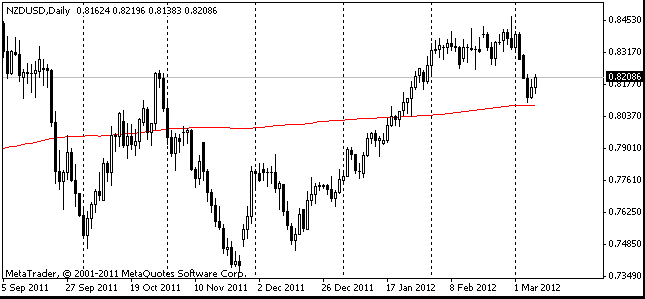EUR/usd
Today is the second day of the EU summit. This means that today we should expect comments concerning the progress made to resolve the sovereign and banking crisis. For the most part of the day yesterday the market was lifeless and the trade volumes in Forex were very low. During the US session speculators attempted to push the rate below Tuesday's low (1.2441). However, the attempt failed. During the Asian session today it was attempted to drive the pair in the opposite direction. Apparently, it is the work of the Japanese funds and traders, as the demand for risky assets last night was really strong. Thus, EUR/USD rose above 1.25 to the level of Tuesday's highs. But this movement shouldn't be regarded as anything significant. It's very likely that speculators will try to speed up the pair on the end-of-summit comments (very few doubt that the final communiqué will include the most optimistic and encouraging words). But as has been often the case before, the market participants will most likely weigh up everything, come up to the conclusion that the taken measures are not enough and continue to put pressure on the periphery markets. However, it doesn't mean that Europe doesn't see any improvements at all. Thus, the adoption of measures to reform the labour market in Italy is a definite step up. The inflexibility of the labour market in this country is often blamed for the loss of competitiveness and the slack economic growth over the decade preceding the crisis. Of course, Mario Monti didn't manage to implement the reforms at the scale that had been planned, but still he's taken a step in the right direction. Across the Atlantic we can also observe some positive shifts. The US labour market keeps coming back to life. The Pending Home Sales data released yesterday proved to be better than expected. In May the index grew by 5.9%, and the annual rate of the indicator made the considerable 15.3%. So now it just remains to see what the officials will say. Hope that they will manage to arrive at a common decision in regard to the European Union.

GBP/USD
Judging by the British statistics for the last week, the dwellers of Albion prefer to spend cash on retail goods, putting off the mortgage till better times. The official data on retail sales, released last week, indicated a swift growth by 1.4% in May. And yesterday it became known that the leading CBI Retail Sales figure has doubled up to 42 in June from 21 a month before. That means that the companies which reported the sales growth against the last year are by 42% greater in number than the firms which suffered the decline. It is the highest figure since the end of 2010. Against such a background the purchases in the pound don't look very surprising.

USD/JPY
The yen traders didn't venture to buy USD/JPY yesterday. Instead they decided to keep the pair close to the important support line. A surprising thing is that the pair should drop despite the impressive growth in Nikkei. As a rule, there is a direct correlation between them. Yet, don't pay much attention to these fluctuations, as the future has more important news in store for us.

NZD/USD
This month we've talked a lot about the Australian dollar and its ability to recover from the slump in May. However, its New Zealand counterpart has been recovering even faster. It is clearly seen in the systematical decline of AUD/NZD. Last night the Kiwi rose up to 0.7950, which corresponds to the 200-day moving average. The RBNZ is not expected to cut the rate either this or following month, so the interest rate differential is on the side of New Zealand now. But be careful, the business sentiments in thecountry keep getting worse due to the slowdown in China and issues of the export-oriented industries.
